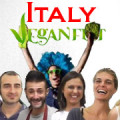 The first time someone serves you chicken, fish, or turkey after becoming vegan, you are shocked. Often, restaurants, family and omnivores don’t necessarily know or understand what this new diet means. You might receive a chicken salad sandwich containing chicken, eggs and mayonnaise because someone might mistakenly think that they are serving a vegan choice. So let’s review some of the things to look out for when ordering a vegan meal, and help avoid this situation!
The first time someone serves you chicken, fish, or turkey after becoming vegan, you are shocked. Often, restaurants, family and omnivores don’t necessarily know or understand what this new diet means. You might receive a chicken salad sandwich containing chicken, eggs and mayonnaise because someone might mistakenly think that they are serving a vegan choice. So let’s review some of the things to look out for when ordering a vegan meal, and help avoid this situation!
A restaurant may tell us, “If it looks vegan, it is.” Because of this, we sometimes have to investigate a bit further to make sure what we’re being told is true. We can’t see the chicken broth that the rice was cooked in, or the beef fat that someone soaked our potato French fries in before frying, or the fish sauce in our Pad Thai. We don’t know if that restaurant or store understands the different reasons why we are choosing to eat vegan, and they also may not know about the different invisible non-vegan ingredients that can exist in their foods.
THE OBVIOUS:
- No Meat
- No Fish
- No Birds/White Meat
- No Eggs
- No Products With Eggs (Tougher! You will have to read the labels of all baked goods, including breads. We can’t see eggs that are baked in.)
- No Mayonnaise (Unless vegan mayo, most mayo is made with eggs. They both taste and look exactly the same!)
- No Animal Rennet (Rennet is an enzyme used in making cheese that can come from animals or plants. Look for plant-based rennet. Rennet is invisible unless you read the label. Beware of pizza.
- No Dairy
- No Milk Products
- No Casein (Milk protein, so you might not see milk listed, but “casein” instead. Casein is invisible unless you read the label.)
- No Bee Products (Note for Beegans: I would not expect a restaurant to serve harm-free, organic, local bee products from a backyard beekeeper that loves bees.)
- No Gelatin:
- Gelatin can be hiding in numerous places, including gummy bears, a box of chocolates, gelatin desserts, cakes, birthday cakes, wedding cakes, pies and puddings. And again, it’s invisible.
- No Lard/Manteca (Spanish For Lard):
- Pinto beans or refried beans, used in Mexican food for example, are often made with lard or manteca.
- Flour tortillas can also be made with lard or manteca.
FOODS YOU ALWAYS HAVE TO CHECK:
- Bagels: Egg bagels are not vegan!
- Beans: Unless you know they are vegan, you have to ask about lard/Manteca.
- French Fries: Were these fries soaked in tallow, beef fat or beef broth before they were fried? The restaurant might have received them frozen, presoaked.
- Gluten-Free Foods: In an effort to be gluten-free, many foods seem to have more eggs.
- Mediterranean Food: Sometimes your baba ghanoush might be made with mayonnaise. I have no idea why.
- Salad Dressings: Many salad dressings contain cheese, dairy or mayonnaise.
- Mexican Food: Again, check those beans and check the rice for chicken broth.
- Pizza Crust: It might look vegan, but it could have casein, rennet or other dairy or eggs inside.
- Pasta: It could be made with eggs or cheese.
- Rice/Rice Pilaf: Often rice dishes are made with chicken broth.
- Soup: Often soup is made with chicken or fish broth or fish sauce. We can’t see it and we have to ask.
- Thai Food:
- Fish Sauce. Always check Thai food sauces and soups for fish sauce or fish base.
- Thai Curry. Even if it’s says or is labeled vegan!!! HappyCow’s Nate Williams brought this to my attention. My investigation found that there are some curries from Thailand that contain shrimp paste, but do not state shrimp paste on the label, and may even say vegan (or vegetarian) on the label (for the benefit of import/export). We can only know that it’s vegan if we make it ourselves.
You can also easily see what a waste it is to use animal products in some of these foods. For example, there are so many great tomato or vegetable soups that someone could use to flavor rice. Why use chicken broth or caldo de pollo (Spanish)?
A separate but related note is that we also never know if a restaurant uses separate cutting boards, pots and pans to avoid cross contamination. This is an important reason to support vegan restaurants! Read more about cross contamination at the grocery store here.
Anyway, I’m sure you can think of a zillion more examples. Please chime in and add them in the comments.
We are so fortunate that our vegan restaurant and store choices are many and the numbers are increasing globally. Wonderfully accommodating, many omnivore restaurants are now clearly marking their vegan options too. But if you think something is not right, or doesn’t look or taste right, ask to see the ingredients. You can also email me at MicheletheTrainer@HappyCow.Net if you have any questions.
Image source: TraceOneView.com






1 Comment
marina_pedrosa (1 comments)
December 10, 2014 at 1:03 pmNice post! The most common in Spain is deep fry with olive/sunflower oil. But I’ll keep an eye on everything!